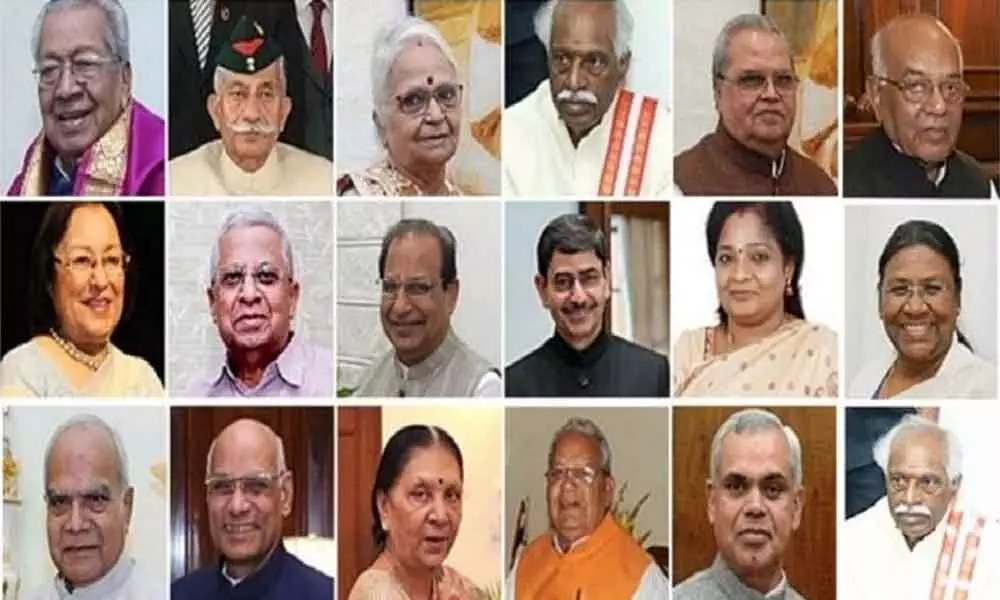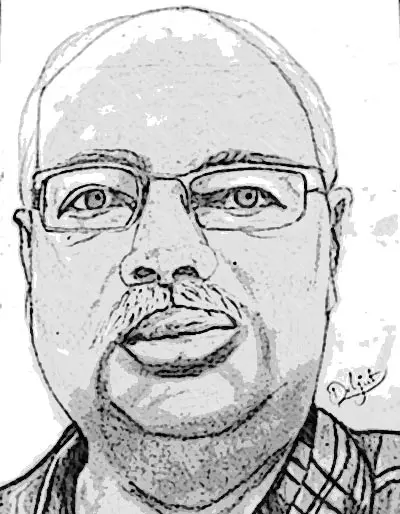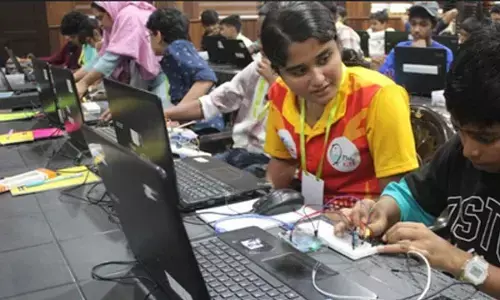Of Governors and responsible federalism

Of Governors and responsible federalism
The institution of Governor in India has been getting mired in political controversies. When the Constituent Assembly came with the idea of creating the institution of Governor, the aim was to provide good and pure administration.
Dr Ambedkar had felt that effective performance of the elected executive should have certain checks and balances and hence there should be a chief executive called the Governor whose main role will be to protect and defend the Constitution and the law as incorporated in the oath of office under Article 159 of the Indian Constitution in the administration of the State affairs.
It was felt that this was a prerequisite and that the Governor must, in the first place, help create a perception about himself within the government as well as among the citizens of the state that he cares for good and pure administration, and is not promoting the interests of the party ruling at the Centre.
Foreseeing the possibility of misuse of the office of Governor, some of the members of the Constituent Assembly expressed reservations about the impartial functioning of a nominated Governor endowed with "discretionary powers".
But people like Jawaharlal Nehru, K M Munshi and P S Deshmukh, argued that the Governor should be a nominated head of the State with sufficient powers to discharge his constitutional duties. In a debate on June 2, 1949, P S Deshmukh opined: "After all the Governor is essentially a link between provincial autonomy and the President and the Government of India, and that function he can discharge adequately only if he has the authority to ask the Cabinet to reconsider certain things and also to keep himself informed from day to day as to what orders have been issued and what sort of administration is being carried on."
Nehru was of the opinion that Governor should be a detached figure who can rise above party politics, a person eminent in other walks of life, such as an educationist. Though in practice things proved to be different. The office of Governor came to be known as rehabilitation centre for some retired politicians.
There was also a phase where the Governors played politically motivated roles and were alleged to be the agents of the Centre by opposition parties. It was not a mere allegation. There have been instances where complete disregard for constitutional morality was shown in many states which includes the undivided Andhra Pradesh.
Such practices continued across regimes from the United Progressive Alliance to the National Democratic Alliance, be it the wrongful dissolution of the Bihar Legislative Assembly by Governor Buta Singh in May 2005 or the constitutional crisis triggered by the unlawful advancement of the Assembly session and subsequent imposition of President's rule in Arunachal Pradesh by Governor J P Rajkhowa in 2016.
We have seen how the then Governor Ramlal dismissed the elected Chief Minister N T Rama Rao in a coup of August 16 and replaced him with Nadendla Bhaskara Rao who pledged cooperation with the Congress government led by Prime Minister Indira Gandhi. We have seen how Governor Narayan Dutt Tiwari had to be pushed out of the state for certain immoral activities in Raj Bhavan.
There have been instances of Tripura Governor justifying the act of BJP supporters pulling down a statue of the leader of the Russian revolution Vladimir Lenin in Tripura, Governor Tathagata Roy tweeted : "What one democratically elected government can do another democratically elected government can undo and vice versa".
The statue had stood there for the last five years in Belonia town which is about 90 kms south of the state capital Agartala. The statute was installed in 2013 at a cost of three lakh rupees by the then State government.
In the recent past we have seen the confrontation between the Rajasthan Governor and the Chief Minister Ashok Gehlot on July 12, 2020 when the former deputy chief minister Sachin Pilot revolted.
There were also a serious confrontation between the Chief Minister of Delhi and the Lt Governor and a situation arose when the Chief Minister Arvind Kejriwal sat on dharna inside Raj Bhavan as the Governor refused to meet him. On Thursday, we have seen how the Maharashtra Government refused permission to their State Governor to use private aircraft after he had boarded the flight.
Tensions between West Bengal chief minister Mamata Banerjee and Governor Jagdeep Dhankhar reached a flashpoint recently and angry exchanges over issues like curfew protocols, coordination on relief measures and the visit of a central team to check for coronavirus measures were witnessed. Mamata had shot off a five page letter to Dhankar and questioned his role as a governor. She accused him of making direct attacks, interfering in her government's work.
Another recent confrontation between the Governor and government was in Kerala. The Governor refused to convene a special session of the Kerala Assembly that was intended to discuss the ongoing farmer protest in New Delhi.
Such instances portray the negative image of the state governors as an agent of the centre and gives an impression that the Governor's office undermines duly elected State governments.
On the other hand we have also seen some governors who were pro active and came to be known as people's governor. The first woman Governor of Andhra Pradesh Sharada Mukherjee (1977 to 1978) is one of the best examples of demonstrating the relationship between the elected executive and the gubernatorial post of governor.
Born in Rajkot, she was hailed as 'Beauty Queen' of Elphinstone College of Bombay (now Mumbai). She married the first Air Chief Marshal of Indian Airforce Subroto Mukherjee in 1939. She came to be known as people's Governor. Her concern for the people can be seen from her reaction when the state was hit by worst kind of cyclone.
A major and most devastating cyclone had ravaged many areas in the Krishna River delta region. The island of Diviseema, which was hit by a six-metre-high (20 ft) storm surge, experienced a loss of 10,000 people. Hundreds of bodies were floating in the waters and bodies bloated beyond recognition were consigned to mass pyres.
Landslides ripped off the railway lines in the Waltair-Kirandal route. Sharda Mukherjee broke down in tears after seeing the plight of people. She took initiative in ensuring that the State administration goes to the rescue of the people and take up rehabilitation works.
Now Tamilisai Sounderarajan, the first woman Governor of the youngest state Telangana has set a good precedent of not only being an active Governor but also creating her own style of approaching the government in getting several issues resolved and has come to be known as people's Governor.
When she was appointed as the Governor of Telangana replacing her predecessor ESL Narsimhan who had the longest tenure starting in undivided Andhra Pradesh in 2009 to 2014 and thereafter till 2019 in the newly formed state of Telangana, there were speculations that BJP government at Centre had chosen her with some political agenda.
The state government too was apprehensive and presented a cold attitude initially. But then she made it clear that she was very aware of the responsibilities of the elected government, the boundaries of the office of the Governor, the limitations and the powers of the Governor.
Still the State government was not convinced since she after assuming office had started playing active role. Being a gynaecologist by profession she started her proactive role by focussing attention on health sector. She had visited hospitals like NIMS and gave certain suggestions.
The state government somehow was not very happy with her visits to hospitals. But then following few interactions the Chief Minister K Chandrasekhar Rao had with her, things started improving.
She succeeded in creating a perception about herself within the government that she was in the state for good and pure administration and not for promoting interests of any party.
One of her achievements was in making the government accept and implement Ayushman Bharat scheme. She told KCR that while the state was implementing the Arogyasri, there was nothing wrong in implementing the central scheme as well as it would help all those who are members of the central scheme staying in Telangana have access to medical facilities.
Governor being the chancellor of state universities is technically free to act within the limitations imposed by the university statute. But then, as in principle, the Governor is an outsider to the state and would not be conversant with local dynamics to handle the affairs of state universities.
At the same time it would be inappropriate and unwise for the governor to lend his/her ears covertly to the local members of the ruling party or the centre.
In case of the present Telangana Governor, she did lot of research and prepared a voluminous document on various aspects and problems being faced by the Universities and has give certain directions to the state government particularly regarding the appointment of Vice Chancellors.
In fact, Governors should not confine themselves to Raj Bhavan, they should go the people, assess for themselves how the government headed by them was functioning, how various welfare schemes were being implemented and advise the government accordingly. Such acts would certainly trigger responsible federalism.
The State governments too should not treat them as sinecures. They should be given due recognition as vital offices in the federal fabric of Indian administration.
















